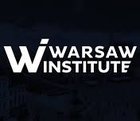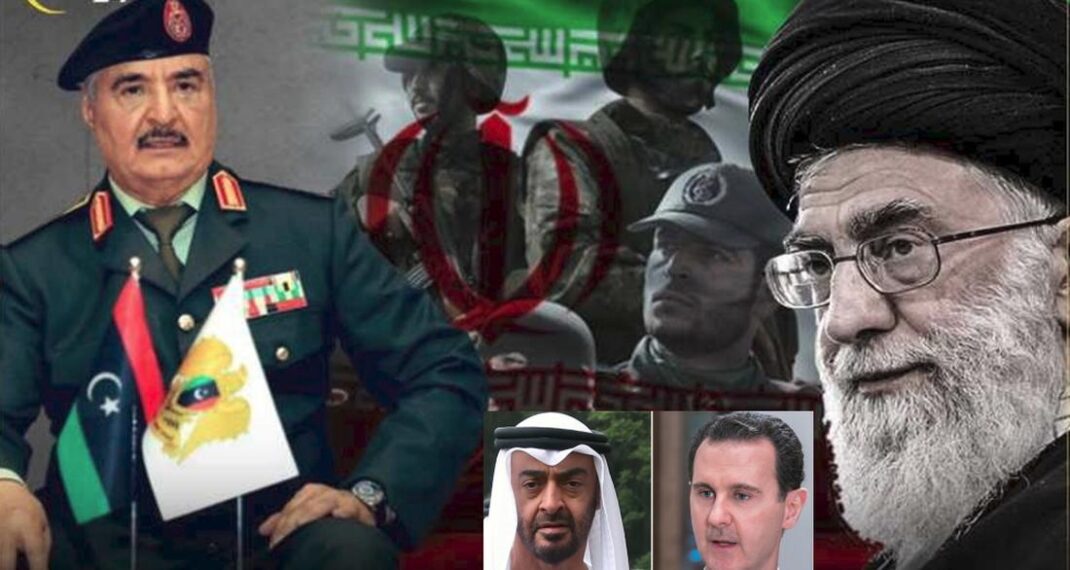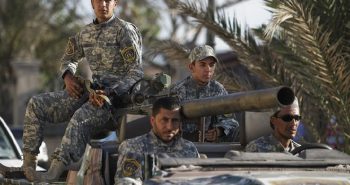By Ali Bakeer

During June 2020, two senior Iranian officials signaled a shift in Iran’s stance regarding Libya.
.PART (II)
Heated rivalry with Turkey
For some time, Iran has been watching the regional role and influence of Turkey, a staunch opponent of the Assad regime and a regional rival, rising in fast especially in Syria.
Although Iran is a member of a tri-lateral setting on Syria with Turkey and Russia, Ankara tends to ignore Tehran whenever there is a critical situation in Syria that needs to be addressed. Turkey usually coordinates with Russia through high-level bilateral meetings that exclude Iran. From the Iranian perspective, the Turkish behavior of ignoring Iran in Syria portrays Tehran as an inferior or junior player. As a result, Tehran feels humiliated by Turkey.
Last March, Turkey launched a military operation in Syria (Operation Spring Shield), resulting in heavy losses for the Assad regime and the pro-Iran militias.
In one offensive, a Turkish drone strike killed more than 50 pro-Iran Shiite militiamen including IRGC, Hezbollah, Fatemiyoun, and Zainebiyoun members.
Furious about the Turkish action, Iran issued a veiled threat to Ankara under the name of Iran’s “military advisory center” in northern Syria. In its statement released by the semi-official news agency “Fars News”, the so-called center threatened that the Turkish military bases in Syria was always within their reach but the members of the center and what the statement calls them “resistance factions” refrained from targeting the Turkish bases.
The center uncovered that despite sending mediators to stop the Turkish bombardment against the pro-Iran militias, Ankara ignored the effort and continued to hit them hard resulting in a high number of causalities.
This experience has forced Iran to look for new ways to contain Turkey and settle a score with it. After the (OSS), the Syrian regime increased significantly its pro-Haftar involvement in Libya and so did Iran.
It is no coincidence that the relationship between the Assad regime and Haftar came to the fore again during March following reports of a secret visit by Haftar to Damascus, which paved the way for the resumption of diplomatic relations between them and setting a common agenda against Turkey.
Soon after, the US- sanctioned Syrian -Cham Wings Company transferred mercenaries and military equipment from areas under the control of the Assad regime to Benghazi –under the control of LNA- to support Haftar’s military efforts against Turkey-backed (GNA) in Tripoli.
According to GNA, the aforementioned airline sent several flights to Benghazi full of mercenaries and military experts linked to Russia, Iran’s IRGC and Hezbollah.
Although Ahmad Al-Mismari, spokesman for Haftar’s LNA, denied the existence of Hezbollah or the Assad regime fighters in Libya, noting that these are “-Muslim- Brotherhood lies”, a report by the Committee of Experts submitted to the Security Council on April 24 refuted Al-Mismari’s allegations on the non-existence of the Assad regime mercenaries fighting along with Haftar forces.
According to the UN report, since the beginning of the year, two thousand Assad regime mercenaries came from Damascus to Libya via at least 33 flights to support Haftar’s offensive alongside around 1,200 mercenaries of the Russian Wagner, and of course the already documented mercenaries from Chad, Sudan, and other countries.
The Assad- Haftar emerging alliance couldn’t have happened despite Iran or against its will because it will bring new liabilities for Tehran in Syria as Assad, who suffers shortages of human resources to re-gain control of whole Syria, sends more of his men to Libya. In fact, this alliance has been beneficial for Iran in several ways.
First, as more of Assad’s men are going to Libya, this will help Iran tighten its grip on the Assad regime and increase its influence over what is left of its men through its militias.
Without enough men for the regime in Syria, neither Assad nor Russia can do much if Iran says no. This is very important taking into consideration that Moscow is trying to consolidate its dominance over the Assad regime vis-à-vis Iran lately and contain Tehran in Syria via side deals with Israel and Turkey.
Secondly, by implicitly endorsing the Assad-Haftar alliance, Tehran shows solidarity with Assad regime and Russia in Libya and indirectly serves its own goal of increasing the pressure on Turkey with the hope that would weaken Ankara in Syria, ease its pressure on Assad regime, and strengthen Iran’s position in return.
Thirdly, Iran hopes that working implicitly on an anti-Turkey agenda can bring UAE, Saudi Arabia, and Egypt closer to it in Syria in a way that helps rehabilitate Assad, secure an Arab-legitimacy umbrella for him, and ease the burden on Tehran financially and military.
Indeed, all these countries have condemned Turkey’s military operation against the Assad regime at the end of February and beginning of March 2020, practically putting them in the same camp when it comes to countering Turkey.
The Iran-UAE nexus
Moreover, considering the UAE connection with both Assad and Haftar, it is highly likely that Abu Dhabi encouraged an alliance between them that even bringing Abu Dhabi and Tehran closer to each other.
In an interview with him on 22 July 2020, Iran’s Supreme Leader’s advisor for military and defense affairs, Hussein Dahkan, said that his country’s relations with UAE have improved as Abu Dhabi’s attitudes towards Tehran have changed.
The UAE leads the support for Libya’s Haftar and at the same time leads the efforts to rehabilitate the Assad regime in the Arab world and guarantee a way back for him to the Arab League.
Parallel to this effort, several reports have confirmed that Abu Dhabi is equipping Haftar with the Russia-made weapon systems such as the Pantsir, unding the Russian role in Libya, and paying -in collaboration with Saudi Arabia– the salaries of Russia’s Wagner mercenaries and Assad regime mercenaries fighting for Haftar.
At the end of 2018, Abu Dhabi reopened its embassy in Damascus and described Assad as the “wise leader”. Several political, economic, and security high-level Emirati delegations visited the Assad regime in the last few years to revitalize the bonds between the two sides.
During the pandemic, Abu Dhabi Crown Prince Mohammed bin Zayed Al Nahyan has called Syrian President Bashar al-Assad, expressing support for his government.
A French report detailed recently the UAE effort to train Assad regime pilots, and senior members of his military intelligence service starting from 2020.
In line with this, the UAE-Iran relations have been warming up. Last year and amid Trump’s “Maximum Pressure” campaign on Iran, Abu Dhabi released $700 million of frozen funds for Tehran, refrained from accusing Iran of targeting oil tankers in the Gulf and sent security delegations to Iran. Moreover, the UAE continues to be a hub for laundering money in favor of Iran.
In June 2020, the US said that in one case, a man was able to launder nearly $1 billion for Iran through UAE.
In January 2020, Mahmoud Vaezi, chief staff of the Iranian Presidency, noted that UAE position in Yemen started to change in a positive way.
During the pandemic, Iran’s Foreign Minister Mohammad Javad Zarif and his Emirati counterpart Abdullah bin Zayed Al Nahyan had a phone call.
According to Iranian Foreign Ministry spokesman Abbas Mousavi, the spread of the coronavirus in the Middle East has even brought “more reason and logic” to Iran’s relationship with the United Arab Emirates.
The Iranian statements might explain why the Houthis in Yemen continue to hit Saudi Arabia and Riyadh with missiles and drones while sparing Abu Dhabi. These developments mean that it became much easier for Iran and UAE to align their interests in certain issues whether in Syria, Libya, Yemen, or elsewhere.
Iran-Assad-Haftar illicit trade
Libya can also be seen as a perfect stop for Iran’s illicit trade whether it be drugs, weapons, oil, or money laundering. Although Israel has recently revealed that Haftar forces were using Iranian-made anti-tank weapons, this was not an exception.
In May 2020, there have been claims that Haftar militias used an Iran-made Ababil drone over Gharyan. Although not confirmed, there is a precedent where Haftar forces have been employing Iranian drones against the UN-recognized GNA. In October of 2017, photos from one of the Libyan airbases of Haftar forces uncovered the presence of an Iranian-made Mohajer -2 drone. Iran-made weapons can find their way to Haftar forces whether directly or through intermediaries.
The fact that Haftar forces have been desperately in need of weapons regardless of their origins, they could obtain Iranian weapons and ammunition through the Assad regime or even through UAE-based companies that provide such services.
The experience in Syria shows that despite Iran was supporting the Assad regime against his people, UAE based companies were supplying his army with fuel and military equipment.
With the deep involvement of Russia and the Assad regime in Libya, both of which are allies of Tehran, it will be easy for Iran and UAE to boost its illicit trade in Libya.
Last April, the Financial Action Task Force (FATF), a Paris-based global dirty money monitoring group, accused UAE of doing too little to stem money laundering and terrorist finance.
Later on, Bloomberg released the details of a UN classified report which reveals that UAE used Western mercenaries through two Dubai-based companies, namely, “Lancaster 6 DMCC” and “Opus Capital Asset Limited of Zaid” in an operation in Libya.
Diplomats confirmed that “the two companies funded a process to supply Haftar with helicopters, drones and cyber capabilities, through a complex network of dummy companies.”
According to Mohammed Ali Abdallah, a senior adviser to the GNA and its representative to the United States, the UN-recognized GNA was able to track specific flights and planes in May that delivered Russian and Iranian arms to Haftar, saying they point to a “supply chain of weapons.”
When it comes to drugs, Fathi Pashaga, Minister of the Interior of the GNA, accused Bashar al-Assad regime of smuggling drugs through Syria to many countries, including Libya, adding that the Syrian regime is using the revenues of this illegal trade to finance its activities.
Pashaga pointed out that the Assad regime sends its sea shipments of drugs from the port of Latakia in northern Syria to the ports of the eastern region in Libya under the control of warlord Khalifa Haftar, among them the port of Benghazi.
Drugs, in general, are an important source of income and hard currencies, therefore they have been an essential part of the Assad regime, Hezbollah, and Iran business network for a long time.
During the Lebanese war, the Bekaa Valley was securing about half of Europe’s drug consumption. In the 1990s, Assad regime income from the Lebanese Hashish was estimated to be nearly half of Syria’s income.
In 2017, Politico published an unprecedented investigation into the role of Hezbollah and Iran in the illicit trade, chief among them drugs. The report revealed how US President Obama suspended the “Alexandra” project concerned with this matter as part of arrangements related to reaching a nuclear deal with Iran.
The importance of drugs as a source of income increases with the increasing financial and economic pressures on these parties. At the end of 2018, the Greek Coast Guard seized the Syrian-flagged “Noka” ship while on its way from the Latakia port in Syria to Benghazi in Libya.
The ship had six tons of processed cannabis and three million super-strength “Captagon” amphetamine pills hidden aboard. The seized drugs worth more than 100 million euros.
In July 2019, the Greek authorities have seized the world’s largest single haul of super-charged amphetamine Captagon pills from Syria.
The shipment included 5.25 tons of the drug – 33 million Captagon pills – worth more than half a billion euros, which is almost worth two-thirds of Syria’s total exports of food and services in 2017.
Recently, several regional countries seized also massive amounts of drug shipments. The only common thing between them is that their origin was Syria and specifically Latakia port. The port has been under the control of Iran’s IRGC since last year.
Assuming that all these huge amounts of drugs from Assad regime areas are being shipped to Libya and elsewhere through the port without the knowledge of the IRGC is something naïve at best. If something, they confirm the Iran-Assad-Haftar link.
Tactical shift?
Interestingly, during June 2020, two senior Iranian officials signaled a shift in Iran’s stance regarding Libya. During his visit to Turkey, Iran’s Foreign minister Javad Zarif said that his country shares the same view with Turkey on solving the problem in Libya.
It is believed that Zarif was trying to court a supportive Turkish stance on U.S. sanctions and convince Ankara of resuming the gas imports.
One day later and while he was in Moscow, Zarif was asked about Iran’s view on the situation in Libya. He said, “We support the efforts that Russia and Turkey are making to end the conflict in Libya, and we hope that the legitimate government in Libya will be able to bring calm to the people of Libya,”.
Later on, Iran’s Supreme Leader’s advisor for military and defense affairs told Aljazeera that his country recognizes the UN-recognized GNA and that Tehran didn’t do what contradicts this position, adding “we are not in Libya, and we don’t interfere in the Libyan issues. The claims that we support Haftar forces are funny and ridiculous.”
These statements contradict Iran’s initial position which stopped short of recognizing the GNA. It is noteworthy that they came after two important developments.
First, Danny Danon’s letter to the Security Council on the Iran-made weapons with Haftar forces. Second, the major defeats of Haftar at the hands of the Turkish backed GNA forces in the western and central parts of Libya.
In this sense, there are two possible explanations. Either these statements can be an indication that Iran is trying to adjust its position to minimize the negative impact of these developments and draw gains while waiting for the next phase of the crisis.
Or, these statements aim to give the false impression that there is a policy change in Tehran’s position without actually the need to change anything.
The new Iranian statements are also in conflict with the position of GNA from Tehran. The GNA is quite critical of Iran and its role and is seen as supportive to Assad and Russia who are engaged in an effort to prop up warlord Haftar in Libya.
In this context, if the Iranian statements are nothing but a maneuvering step, they can be seen as an attempt to undermine GNA by creating a false perception in the West and in the USA in particular that the GNA is an ally of Iran.
This in itself pretty much serves Iran and the anti-GNA camp. But, whether this is the ultimate goal of the statements or not will remain to be seen.
***
Dr. Ali Bakeer – a political analyst who specializes in geopolitical and security trends in the Middle East with a specific focus on Turkey, Iran, and the Arab Gulf states. Dr. Bakeer has over a decade of experience as a consultant – working with senior officials, decision makers, and other stakeholders for governmental, non-governmental, and private sector institutions across the region.
_____________





